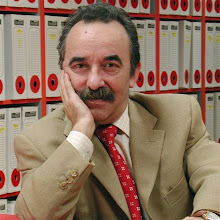Toward the end of the novel, I describe a piece of gazelle skin where Piri Reis, an admiral of the Turkish navy, drew a map of the world in 1513.
The Piri Reis map shows the western coast of Africa, the eastern coast of South America, and the northern coast of Antarctica. The northern coastline of Antarctica is perfectly detailed. The most puzzling however is not so much how Piri Reis managed to draw such an accurate map of the Antarctic region 300 years before it was discovered, but that the map shows the coastline under the ice. Geological evidence confirms that the latest date Queen Maud Land could have been charted in an ice-free state is 4000 BC.
Further and more accurate studies have proven that the last period of ice-free condition in the Antarctic ended about 6000 years ago. There are still doubts about the beginning of this ice-free period, which has been put by different researchers everything between year 13000 and 9000 BC.
The question is: Who mapped the Queen Maud Land of Antarctic 6000 years ago?
In 1953, a Turkish naval officer sent the Piri Reis map to the U.S. Navy Hydrographic Bureau. To evaluate it, M.I. Walters, the Chief Engineer of the Bureau, called for help Arlington H. Mallery, an authority on ancient maps, who had previously worked with him. After a long study, Mallery discovered the projection method used. To check out the accuracy of the map, he made a grid and transferred the Piri Reis map onto a globe: the map was totally accurate and portrayed the Earth’s circumference with a precision of 50 miles. He stated that the only way to draw map of such accuracy was aerial surveying.
The Piri Reis map is something which is not supposed to exist: the relative longitudinal coordinates are accurate and the first instrument to calculate longitude was invented in 1761 by the English John Harrison.
In fact Piri Reis himself admitted he based his map on older charts, such as
the "Dulcert's Portolano", year 1339, where the latitude of Europe and North Africa is perfect, and the longitudinal coordinates of the Mediterranean and of the Black sea are approximated of half degree. Then there’s the "Zeno's chart", year 1380. It shows a big area in the north, going up till the Greenland. Another amazing chart is the one drawn by the Turkish Hadji Ahmed, year 1559, in which he shows a land stripe, about 1600 Km. wide that joins Alaska and Siberia. Such a natural bridge has been then covered by the water due to the end of the glacial period, which rose up the sea level.
Oronteus Fineus was another one who drew a map of incredible precision. He too represented the Antarctic with no ice-cap, year 1532. These maps show Greenland as two separated islands, as it was confirmed by a polar French expedition which found out that there is an ice cap quite thick joining what it is actually two islands.
Although it doesn’t disturb my slumber one bit (I’m usually asleep before my head hits the pillow), I wonder who was the cartographer from whose measurements these maps sprang and how on earth did he manage such accurate readings.






